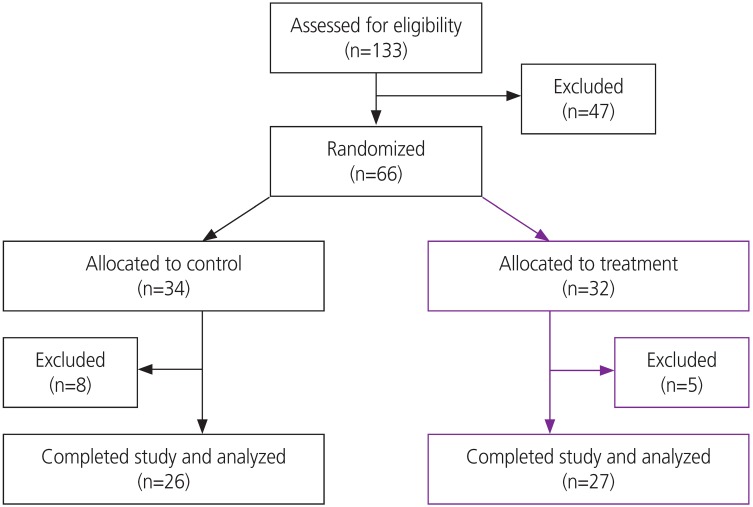1. Rørtveit G, Hannestad YS. Association between mode of delivery and pelvic floor dysfunction. Tidsskr Nor Laegeforen 2014;134:1848-1852. PMID:
25314985.


2. Chaliha C. Postpartum pelvic floor trauma. Curr Opin Obstet Gynecol 2009;21:474-479. PMID:
19855276.


3. Özdemır ÖÇ, Bakar Y, Özengın N, Duran B. The effect of parity on pelvic floor muscle strength and quality of life in women with urinary incontinence: a cross sectional study. J Phys Ther Sci 2015;27:2133-2137. PMID:
26311939.



4. Hilde G, Stær-Jensen J, Siafarikas F, Engh ME, Brækken IH, Bø K. Impact of childbirth and mode of delivery on vaginal resting pressure and on pelvic floor muscle strength and endurance. Am J Obstet Gynecol 2013;208:50.e1-50.e7. PMID:
23103345.


5. Dietz HP, Simpson JM. Does delayed child-bearing increase the risk of levator injury in labour? Aust N Z J Obstet Gynaecol 2007;47:491-495. PMID:
17991115.


6. Dietz HP. Ultrasound in the assessment of pelvic organ prolapse. Best Pract Res Clin Obstet Gynaecol 2019;54:12-30. PMID:
30082146.


7. Atan IK, Lin S, Dietz HP, Herbison P, Wilson PD. ProLong Study Group. Levator avulsion is associated with pelvic organ prolapse 23 years after the first childbirth. J Ultrasound Med 2018;37:2829-2839. PMID:
29675869.


8. van Delft KW, Thakar R, Sultan AH, IntHout J, Kluivers KB. The natural history of levator avulsion one year following childbirth: a prospective study. BJOG 2015;122:1266-1273. PMID:
25514994.


9. van Delft K, Sultan AH, Thakar R, Schwertner-Tiepelmann N, Kluivers K. The relationship between postpartum levator ani muscle avulsion and signs and symptoms of pelvic floor dysfunction. BJOG 2014;121:1164-1171. PMID:
24548759.


11. Takacs P, Jaramillo S, Zhang Y, Datar R, Williams A, Olczyk J, et al. The effects of PPARδ agonist and zinc on ovariectomized rats' vagina. Female Pelvic Med Reconstr Surg 2013;19:126-131. PMID:
23611928.


12. Takacs P, Zhang Y, Candiotti K, Jaramillo S, Medina CA. Effects of PPAR-delta agonist and zinc on vaginal smooth muscle cells collagen and tropoelastin production. Int Urogynecol J Pelvic Floor Dysfunct 2012;23:1775-1779.


13. Taneja SK, Kaur R. Pathology of ovary, uterus, vagina and gonadotrophs of female mice fed on Zn-deficient diet. Indian J Exp Biol 1990;28:1058-1065. PMID:
2283172.

14. Kelkar MA, Khar SK, Mandakhot VM. Studies on antepartum prolapse of the vagina in buffalo--plasma trace element concentrations. Arch Exp Veterinarmed 1989;43:315-318. PMID:
2774829.

15. Ozdemir S, Ozis ES, Gulpinar K, Aydin SM, Eren AA, Demirtas S, et al. The value of copper and zinc levels in hernia formation. Eur J Clin Invest 2011;41:285-290. PMID:
20955209.


16. Schulpis KH, Karakonstantakis T, Vlachos GD, Mentis AF, Karikas GA, Afordakou D, et al. Maternal-neonatal magnesium and zinc serum concentrations after vaginal delivery. Scand J Clin Lab Invest 2010;70:465-469. PMID:
20658899.


17. Lazebnik N, Kuhnert BR, Kuhnert PM, Thompson KL. Zinc status, pregnancy complications, and labor abnormalities. Am J Obstet Gynecol 1988;158:161-166. PMID:
3337165.


18. Caulfield LE, Zavaleta N, Shankar AH, Merialdi M. Potential contribution of maternal zinc supplementation during pregnancy to maternal and child survival. Am J Clin Nutr 1998;68:499S-508S. PMID:
9701168.



20. Smith GI, Atherton P, Reeds DN, Mohammed BS, Rankin D, Rennie MJ, et al. Dietary omega-3 fatty acid supplementation increases the rate of muscle protein synthesis in older adults: a randomized controlled trial. Am J Clin Nutr 2011;93:402-412. PMID:
21159787.



21. Gingras AA, White PJ, Chouinard PY, Julien P, Davis TA, Dombrowski L, et al. Long-chain omega-3 fatty acids regulate bovine whole-body protein metabolism by promoting muscle insulin signalling to the Akt-mTOR-S6K1 pathway and insulin sensitivity. J Physiol 2007;579:269-284. PMID:
17158167.


22. Di Girolamo FG, Situlin R, Mazzucco S, Valentini R, Toigo G, Biolo G. Omega-3 fatty acids and protein metabolism: enhancement of anabolic interventions for sarcopenia. Curr Opin Clin Nutr Metab Care 2014;17:145-150. PMID:
24500439.


23. Trabal J, Forga M, Leyes P, Torres F, Rubio J, Prieto E, et al. Effects of free leucine supplementation and resistance training on muscle strength and functional status in older adults: a randomized controlled trial. Clin Interv Aging 2015;10:713-723. PMID:
25926725.



24. Rowlands DS, Nelson AR, Phillips SM, Faulkner JA, Clarke J, Burd NA, et al. Protein-leucine fed dose effects on muscle protein synthesis after endurance exercise. Med Sci Sports Exerc 2015;47:547-555. PMID:
25026454.


26. Afshari P, Dabagh F, Iravani M, Abedi P. Comparison of pelvic floor muscle strength in nulliparous women and those with normal vaginal delivery and cesarean section. Int Urogynecol J Pelvic Floor Dysfunct 2017;28:1171-1175.


27. Myer EN, Roem JL, Lovejoy DA, Abernethy MG, Blomquist JL, Handa VL. Longitudinal changes in pelvic floor muscle strength among parous women. Am J Obstet Gynecol 2018;219:482.e1-482.e7. PMID:
29902445.


28. Dietz HP, Abbu A, Shek KL. The levator-urethra gap measurement: a more objective means of determining levator avulsion? Ultrasound Obstet Gynecol 2008;32:941-945. PMID:
19035543.


29. Dietz HP, Garnham AP, Rojas RG. Is the levator-urethra gap helpful for diagnosing avulsion? Int Urogynecol J Pelvic Floor Dysfunct 2016;27:909-913.


30. Kozma B, Larson K, Scott L, Cunningham TD, Abuhamad A, Poka R, et al. Association between pelvic organ prolapse types and levator-urethra gap as measured by 3D transperineal ultrasound. J Ultrasound Med 2018;37:2849-2854. PMID:
29672905.


31. Kamisan Atan I, Shek KL, Furtado GI, Caudwell-Hall J, Dietz HP. The association between levator-urethra gap measurements and symptoms and signs of female pelvic organ prolapse. Female Pelvic Med Reconstr Surg 2016;22:442-446. PMID:
27465815.


32. Barber MD, Walters MD, Bump RC. Short forms of two condition-specific quality-of-life questionnaires for women with pelvic floor disorders (PFDI-20 and PFIQ-7). Am J Obstet Gynecol 2005;193:103-113. PMID:
16021067.


33. Dietz HP, Simpson JM. Levator trauma is associated with pelvic organ prolapse. BJOG 2008;115:979-984. PMID:
18503571.


35. Nyhus MØ, Salvesen KÅ, Volløyhaug I. Association between pelvic floor muscle trauma and contraction in parous women from a general population. Ultrasound Obstet Gynecol 2019;53:262-268. PMID:
30084230.






